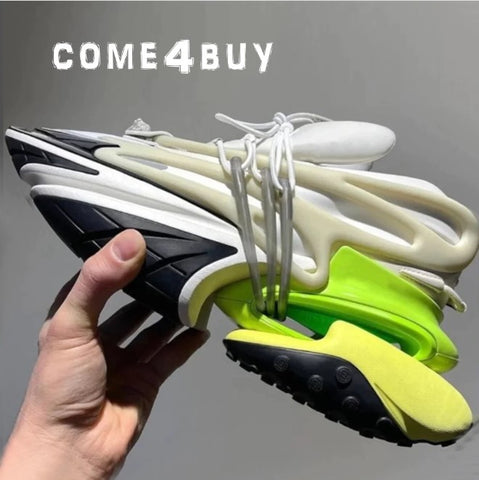Shock absorption sneakers, also known as cushioned sneakers or running shoes, are designed to provide enhanced comfort and protection to the wearer by reducing the impact forces experienced during physical activities such as running, jogging, or walking. These types of sneakers incorporate various technologies and materials to minimize the stress and strain on the feet, legs, and joints.
Here are some key features and components commonly found in shock absorption sneakers:
-
Midsole Cushioning: The midsole is the layer between the outsole and the upper part of the shoe. It usually contains materials like foam, gel, or air pockets that absorb and disperse the impact energy generated when the foot strikes the ground. This cushioning system helps to minimize the force transmitted to the body, especially to the ankles, knees, and hips.
-
Air or Gel Units: Many shock absorption sneakers utilize air or gel-filled units strategically placed within the midsole to enhance cushioning and shock absorption. These units compress upon impact and then slowly return to their original shape, providing a responsive and comfortable ride.
-
Foam Technologies: Various foam materials with different properties are utilized in the construction of shock absorption sneakers. Examples include ethylene-vinyl acetate (EVA) foam, which is lightweight and offers good cushioning, and polyurethane (PU) foam, which provides durable and long-lasting cushioning.
-
Heel Support: Shock absorption sneakers often feature additional support in the heel area to help absorb and distribute the impact forces effectively. This can be achieved through features like a reinforced heel counter or specialized cushioning systems.
-
Arch Support: Proper arch support is crucial for shock absorption and overall foot comfort. Some sneakers incorporate arch support technologies such as molded insoles, removable inserts, or specific midsole designs to provide stability and reduce the risk of injuries.
It's important to note that while shock absorption sneakers can provide significant benefits in terms of comfort and impact reduction, they are not a cure-all for foot or leg conditions. Individuals with specific medical concerns should consult with healthcare professionals for appropriate guidance and recommendations tailored to their needs.





